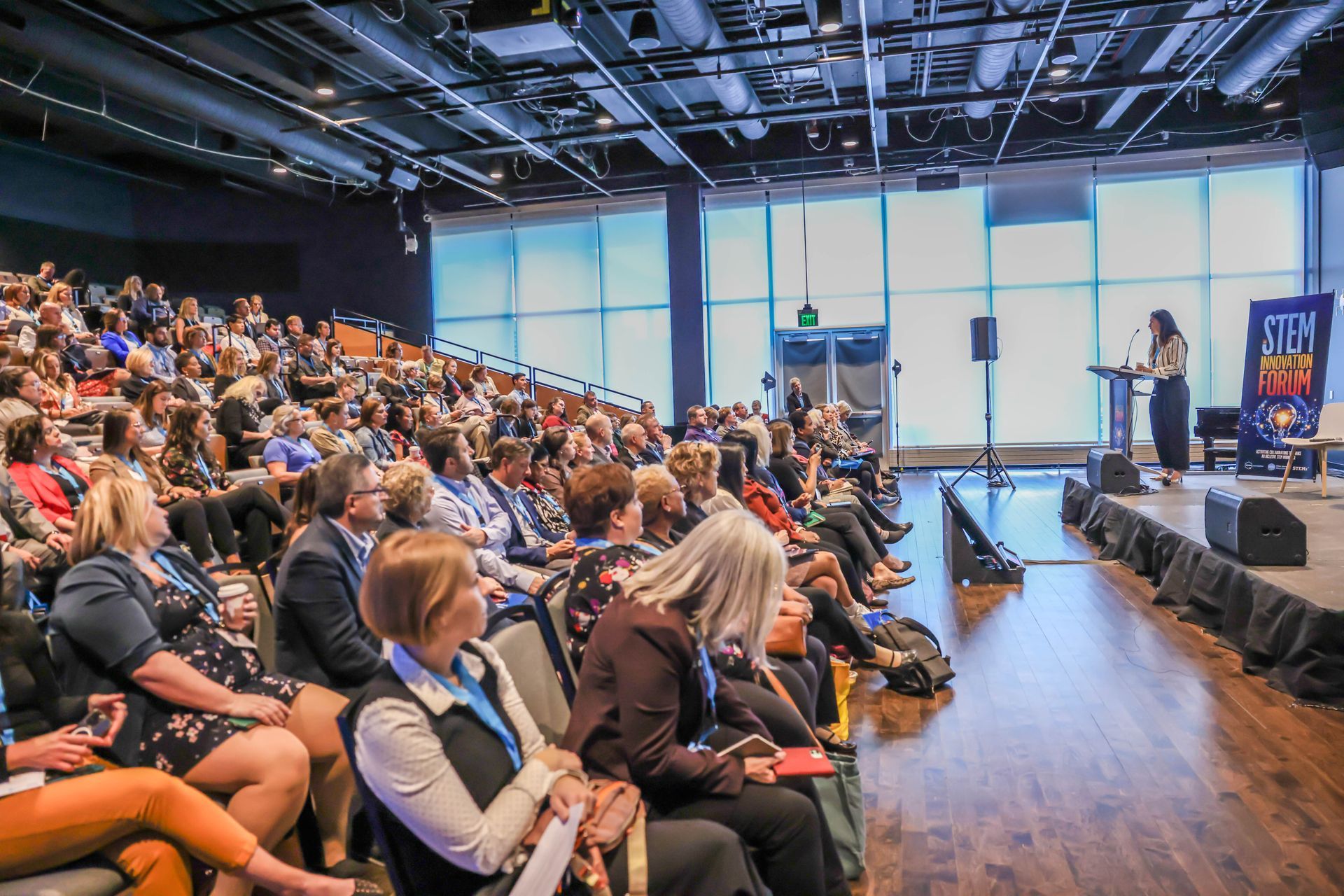Building relationships with top state leaders in New York
Education conferences are a great way to share best practices and new STEM initiatives among teachers and school administrators. Such meetings also can spread the word about STEM achievements to significant state officials. But how do event planners attract such major players? Late last year, the Empire State STEM Learning Network held a conference that featured speeches by New York’s lieutenant governor, among other prominent officials. To find out how the network scheduled such luminaries, we contacted Jill Lansing, assistant vice chancellor for the education pipeline for the State University of New York, which oversees the STEM network:
Q: Tell us about the Empire State STEM Learning Network and its role in promoting STEM education in the state of New York.
A: The Empire State STEM Learning Network is a statewide collaborative of educators, business and industry partners, and government leaders in New York working to expand access to high-quality STEM teaching, increase the number of students in STEM disciplines, and communicate and advocate for STEM policies, programs, platforms and partnerships.
The network is made up of 10 regional hubs that are aligned with New York’s Regional Economic Development Councils. The State University of New York (SUNY) serves as the steward for the Empire State STEM Learning Network.
Q: At the recent conference of the Empire State STEM Learning Network, presenters included New York’s lieutenant governor and the SUNY chancellor. Tell us about that.
A: On December 6, 2016, the fourth annual convening of the Empire State STEM Learning Network was held at the SUNY Global Center in New York City. More than 50 education and business leaders from across the network’s 10 regional hubs came together to celebrate achievements, share best practices for providing students and teachers with high quality STEM learning opportunities, and to discuss priorities and next steps for the network for the coming year.
We were honored to be joined by New York State Lieutenant Governor Kathy Hochul; SUNY Chancellor Nancy L. Zimpher; Stanley S. Litow, vice president of corporate citizenship and corporate affairs and president of the IBM International Foundation; and SUNY Senior Vice Chancellor Johanna Duncan-Poitier.
Having such prominent state and national leaders join us at the convening provided the opportunity to discuss strategies for how the rich education and industry partnerships that are a hallmark of the Empire State STEM Learning Network can advance the future of STEM education and economic growth in New York State.
Q: What were the main points of their presentations?
A: Lieutenant Governor Hochul chairs New York’s 10 Regional Economic Development Councils that have transformed the state’s economy by building upon regional strengths through long-term strategic plans.
The councils include leaders from academia, business, labor and not-for- profits. The lieutenant governor also chairs the State Workforce Investment Board, which addresses a serious concern of businesses: the lack of skilled workers. At the convening, she discussed ways we could build upon the rich education/business partnerships in the Empire State STEM Learning Network to help more students graduate from high school and college prepared for 21st-century careers in information technology, manufacturing, health care and other high-need STEM fields.
SUNY Chancellor Zimpher shared with network members the work she is leading with New York State Education Commissioner MaryEllen Elia to advance TeachNY — a campaign to promote the teaching profession while improving the state’s delivery of teacher preparation programs by expanding clinical practice, generating investment for professional development that spans the career of a teacher and creating regional councils to ensure future teachers will meet projected demand ( https://www.suny.edu/teachny ).
Duncan-Poitier, SUNY senior vice chancellor for community colleges and the education pipeline, shared examples of ways SUNY is working to strengthen the STEM education pipeline by bringing evidence-based strategies to scale.
For example, through a partnership with the Carnegie Foundation for the Advancement of Teaching, SUNY is leading a major initiative to scale-up the Carnegie Foundation’s highly successful Math Pathways Quantway/Statway across SUNY. Quantway and Statway are mathematics competency programs for students that have a national student success rate double the average of traditional remedial classes. Also, in 2016, SUNY was designated as one of 13 Jobs for the Future Student Success Center Networks to benchmark and scale-up “best-in-class” strategies to help community college students complete degrees and certificates.
IBM’s Litow is a founder of Pathways in Technology Early College High School, a grade 9-14 school model where students earn a high school diploma and an industry-recognized associate degree while gaining relevant work experience in a growing field. The schools create a seamless program for students to acquire the academic, technical and workplace skills and knowledge employers need.
There are currently 37 schools in the New York State P-TECH Network. P-TECH partnerships are being established across the United States and the world ( http://www.ptech.org ).
Q: How did the STEM network build relationships with these VIPs that led to their conference appearances? What steps would you recommend to other state STEM networks if they want to nurture relationships with major education officials in their states?
A: Hard work and communication. The Empire State STEM Learning Network is fortunate to have dedicated and driven education and industry leaders working tirelessly to improve and expand STEM learning opportunities for teachers and students.
At STEMxchange 2016 (December in Dallas), David Burns, director of STEM Innovations Networks for Battelle, stressed the importance and power of hard and consistent work at the goals that are important to us as STEM leaders, even when the going gets tough or when you might not think anyone is paying attention. That is what our Empire State STEM Learning Network leaders do every day.
During Lieutenant Governor Hochul’s recent visit to Long Island, Catherine Osiecki, senior educational programs administrator at Brookhaven National Laboratory and project director for the Long Island STEM Hub, described the work of the Empire State STEM Learning Network to the lieutenant governor’s team. After learning about the coordinated network of education, business and industry partners dedicated to STEM teaching and learning and workforce development, Hochul was eager to meet with network leaders to share her priorities and learn more about the work that is underway to help prepare more students for careers in STEM fields.
Hard work pays off, and when you are achieving the results that our Empire State STEM Learning Network leaders have over the past 5-plus years, people cannot help but pay attention. And communicating that hard work is equally important.
At the recent convening of the Empire State STEM Learning Network, SUNY Chancellor Zimpher challenged us to clearly identify the key characteristics and priorities that define the network. Now, at every opportunity, members share key strengths and leverage points of the network that might support the goals shared by key leaders and potential partners for advancing STEM teaching and learning and strengthening workforce development, including:
- Strong regional education/industry partnerships.
- Hubs that provide high quality, industry-aligned, applied STEM learning experiences to students in their regions.
- Hubs that provide high quality STEM professional development to teachers.
- Hubs that leverage the strengths of regional P-TECH partnerships, Career Academies, Smart Scholars Early College High Schools and New York State Master Teachers.
- Recognition of the East Syracuse-Minoa Central School District (central New York State) and the Interdisciplinary Science and Engineering Partnership (western New York State) as national STEM Learning Ecosystems by the White House for their work to provide an architecture for cross-sector STEM learning environments for students in pre-K to college.
- Support by Empire STEM of the new NYS STEM Learning Standards and expansion of career and technical education, applied learning and project-based learning.
- Support by Empire STEM of increased diversity in STEM disciplines and careers.
- Development of the STEM Quality Standards Rubric by Empire STEM, led by the Western New York Hub, to help educators strengthen STEM teaching and learning in their schools and programs.
- Membership of Empire STEM in the national STEMx Network, which is led by Battelle.
We are fortunate to have developed relationships with such prominent leaders in the state’s educational system. These relationships are extremely beneficial to our efforts to promote STEM education in New York State. The Empire State STEM Learning Network is looking forward to working with our state and national leaders and other collaborators in 2017 to help engage more students in STEM and encourage and support students in pathways to STEM careers.
Edited by Patricia Bitler , freelance writer and editor.








